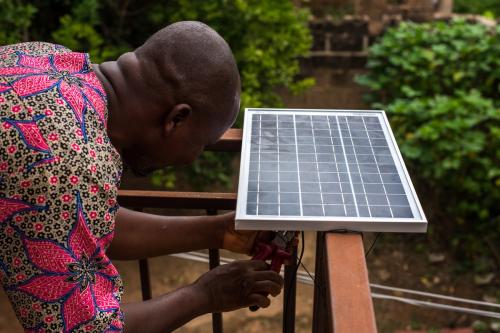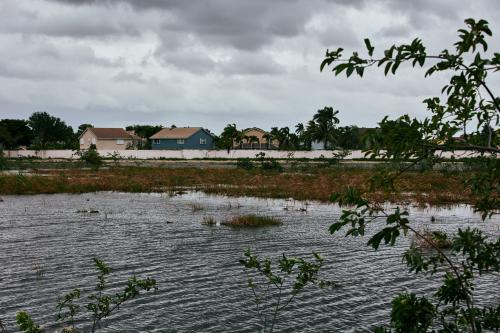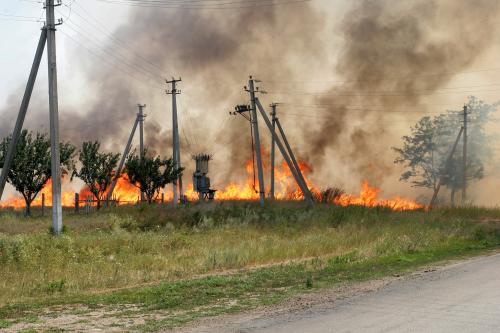The U.S. announcement of a pledge to the multilateral Green Climate Fund (GCF) was a carefully timed and important announcement about a change in the U.S. approach to acknowledging its responsibility for having contributed to this grave risk to the world’s poorest nations. But not in the way you might think.
Suzanne Goldenberg first reported in the Guardian last Friday that the pledge would be $2.5 billion; Lisa Friedman then reported on ClimateWire that it would be $3 billion over 4 years. These sound like significant increases in U.S. climate finance. A fact sheet on the Whitehouse web page confirms the pledge and its conditions.
But not so quick: the U.S. reported that it gave $7.5 billion in “Fast Start Finance” over the three years from 2010 to 2012. Yet when I joined my colleagues David Ciplet and Saleemul Huq in breaking down that number, we found that it was only about $5.1 billion in grants; the rest were loans that would need to be repaid, with interest, or “export credits,” to American firms doing business in developing countries. And based on the U.S. having significantly contributed to global climate change and its unique monetary capability for solving it, the U.S.’s “fair share” was closer to $12 billion of the $30 billion the wealthy countries pledged back in Copenhagen in late 2009.
Still, the Obama administration did sharply increase foreign assistance for dealing with the impacts of climate change (adaptation) and to help developing nations “green” their economies (mitigation), especially in their first budget in fiscal year 2010.
But let’s look closely at the new pledge and consider what’s changed here. Assuming the same amount each year in a four-year, $3 billion pledge, that’s $750 million a year. Back in November 2012, the U.S. reported its FY 2012 actual congressional appropriation for climate aid was $773 million, down from $1 billion in 2010. But that included $348 million sent directly by the U.S. to individual developing countries or to regions through USAID (called bilateral aid). Of the other bits, $133 million went through the State Department and $291 million through the Treasury Department.
So here’s what’s new with Obama’s announcement of the GCF pledge. Previously, the State Department appropriation partly went to U.N. climate convention funds like the Least Developed Countries Fund; the Treasury funds were for those administered by the World Bank.
That’s a very different kettle of fish. The World Bank was the “multilateral channel of choice” for contributor countries, since it allowed them to control where funds went, and the conditions under which they flowed. Contributors like the U.S. were more comfortable with the Washington-based World Bank, and so pledged a lot for the Climate Investment Funds it administered.
What is new here is the United States channeling some significant funds through U.N.-administered channels. Developing countries have seen these as their “multilateral channel of choice” since they have much better representation on the decision-making panels of these funds.
This does seem like a significant shift: from a base of around $130 million a year to $750 million through U.N. channels, the U.S. has affirmed the need for United Nations institutions. Back in the “Fast Start” period from 2010-2012, of the $7.5 billion the U.S. claimed was climate-related flows to developing countries, we calculated only 1.6 percent went through U.N. channels. If other funds remain at about the levels of the past few years, this GCF funding could represent about 30 percent of U.S. climate finance.
This pledge now puts the onus on the fledgling Green Climate Fund board and administration to spend the funds transparently and effectively. Having skin in the game gives the U.S. real leverage to demand these, as the White House fact sheet suggests: “The GCF will require among the strongest fiduciary standards and social and environmental safeguards for all multilateral funds in climate finance today….[with] an Independent Evaluation Unit, …[and] an Independent Integrity Unit.” To build and maintain trust in this fund, it would behoove them to set up independent and real-time tracking of projects, from appropriation to expenditures and documentation of all accomplishments.
As with the joint announcement earlier in the week with China on emission reductions goals, the timing and nature of the announcement is significant and helpful to building momentum towards the Lima negotiations in December and Paris next winter.
So the significance is the channel, not the amount of this pledge. It is significant recognition of the great importance that the 133 nations in the developing world have placed on there being genuine gestures of support for the Green Climate Fund.



Commentary
The $3 Billion U.S. Pledge for the Green Climate Fund: Is It a lot?
November 17, 2014